K.M. Alexander's Blog, page 55
September 20, 2016
Introducing: #My5
Attend any convention, sit in on a reading, or visit panel and during open Q&A, and you’ll hear a common question asked by someone in attendance. It’s a query every author gets. I’ve seen Neil Gaiman blog about it, Stephen King speak about it, and Ursula K. Le Guin write about it. It comes down to this:
“Where do you get your ideas?”
I think people assume that there is some hidden mystery or a big secret in being a writer. However, the truth is that inspiration comes from everywhere and anywhere; the smallest thing can spark a multitude of ideas, and it’s different for every author. For me, I can imagine several key instances that have triggered something in my mind, ideas that have taken root and helped construct the world of The Bell Forging Cycle. I want to share those ideas, and I know others do as well, so I am introducing #My5, a new project I’m starting, focusing on inspiration and ideas. The goal is to create a familiar and straightforward format allowing published authors (indie or traditional) from any and all genres to share some of their inspirations for specific projects with their fans and peers. In these posts, writers will list five sources that influenced one of their projects and they’ll link to the blogs of others authors who are doing the same thing. There’s no rule on what you can find inspiring, be it music, television, books, speeches, landscapes, travel, or whatever; it’s all open. The key is that you can only pick five, no more, no less.
So, if you’re a published author who regularly blogs, you’re invited to participate! Just shoot me an email at hello at kmalexander.com and let me know you’re participating. Write your post, publish it, and link to others who have done the same. The goal is to create a network of ideas so we can share our inspirations together. You can download the #My5 Logo using any of the links below.
 600×600 PNG: White | Black
600×600 PNG: White | Black
1200×1200 PNGs: White | Black
(Vector version available upon request.)
The first round of #My5 entries are coming really soon. So watch this space and follow me on Twitter! I’ll be posting my own and linking to others. Even the simplest thing can often spark amazing stories and complex worlds; inspiration abounds, let’s explore it.
Filed under: #My5 Tagged: ideas, Inspiration, Neil Gaiman, stephen king, the bell forging cycle, ursula k. le guin, Writing








September 4, 2016
Exploring Tahoma & Sun-a-do
This past weekend the United States celebrated the 100th birthday of the National Parks Service, one of our greatest inventions. (Ken Burns agrees.) To commemorate the occasion Kari-Lise, myself, some friends and family explored trails in Mt. Rainier and Olympic National Park. As before, I figured I’d share a few pics. Click to view them larger.






Everything here was shot with my iPhone 6S and processed with VSCO.
Filed under: Travel Tagged: Hiking, mountains, mt. rainier, national park service, olympic mountains, pacific northwest








August 8, 2016
Art Happened
It was a busy weekend in the Alexander household, but a fun one. In a wild convergence of entertainment, an enormous collection of events happened in Seattle. Griffey’s number was retired (24EVER!), Seafair—the annual hydroplane races and Blue Angels air show—were going on right outside my backdoor, and art was happening, a lot of art.
Longtime readers know that my amazing wife and partner in this life, Kari-Lise Alexander, is a painter, so art and art-related things were on our agenda for most of the weekend. If you follow me on Instagram, you probably saw my Instagram Stories over the weekend. But, I am a writer, not a photographer, and I wanted to expand on everything a bit more.
THURSDAY
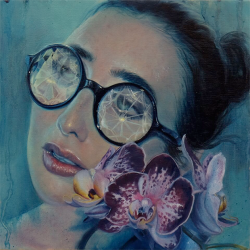 Stars on Her Eyes – Kari-Lise Alexander
Stars on Her Eyes – Kari-Lise AlexanderIt was the first Thursday of August, which meant it was also the First Thursday Art Walk. Kari-Lise had a piece in the Seattle Squared show (this one) at a gallery called Axis. It was a fun little event. It was a good start to our art weekend, and it’s nice to see the neighborhood buzzing with life. I went and hit up another show across the street at a relatively new gallery, and then we bopped over to check out The Drawnk Show. I ended up hanging out with folks until late and arguing why Mad Max was one of the best movies ever made.
FRIDAY
The second Seattle Art Fair was taking place, and we made it a point to attend. This year’s event was even better than the last. A ton of amazing work ranging from sculpture to installation was displayed. Choosing a favorite piece was tough, but I think the highlight for me was Hew Locke‘s The Wine Dark Sea, Group 4. What I saw was just a small selection of his full series, but the works were fascinating, intricate, and carried a lot of meaning. There was a lot to unpack.
 The Wine Dark Sea, Group 4 – Hew Locke
The Wine Dark Sea, Group 4 – Hew LockeAfter spending three hours browsing the fair, we checked out Juxtapoz x Superflat, curated by Takashi Murakami. It was incredible. It was nice to see a new venue in Seattle focusing on new contemporary and pop-surrealist artists. The artists participating are all well established names and it was good to see another presence like that in Seattle.
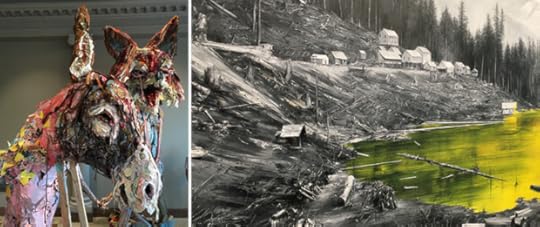 Left to right: Selected Sculpture –
Elisabeth Higgins O’Connor
, Daybreak –
Paco Poment
Left to right: Selected Sculpture –
Elisabeth Higgins O’Connor
, Daybreak –
Paco Poment
SATURDAY
 Left to Right: The Arsenic Waltz (Detail) –
Redd Walitzki
, Abby’s Ghost (Detail) –
Travis Louie
, Nosto (Detail) –
Syd Bee
Left to Right: The Arsenic Waltz (Detail) –
Redd Walitzki
, Abby’s Ghost (Detail) –
Travis Louie
, Nosto (Detail) –
Syd Bee
Roq La Rue has been a mainstay of the Seattle art scene for a long time, and it has become a keystone in the low-brow and pop-surrealism movements. It was the first gallery I ever visited when I moved to Seattle, and I’ve been hitting its events regularly for the last eight years.
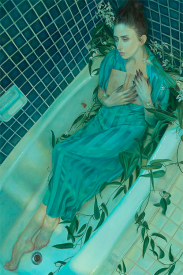 Picking the Perfect Poison – Kari-Lise Alexander
Picking the Perfect Poison – Kari-Lise AlexanderSaturday was the launch party for its final show, Death and the Maiden 2. Kari-Lise had a piece in that show as well. Picking the Perfect Poison (pictured right) is one of my favorites and lucky for you prints are available. We spent a majority of the evening at the gallery hanging out with everyone who came out to see the show. It was great to see such a wide selection of Seattle artists represented.
It was also bittersweet. After the pieces come down, Roq La Rue is going away. It closes its doors this September. During the show and at the afterparty, a lot of locals—artists and fans alike—were sharing memories of the gallery and reflecting on how it had impacted our lives. It’s been a focal point of art walks for both Kari-Lise and me, and its exodus will be felt.
So, yeah, art happened and it was amazing. There were a few shows I missed, in particular, the Out of Sight show, which I regret. Our Sunday ended up being much quieter. We didn’t go to any galleries. I did some reading and spent a little time researching. I couldn’t get my brain in a space to write properly (despite my grand intent earlier in the week). Seafair was winding down. The Olympics were on. The Mariners swept the Angels.
It was a good weekend.
Filed under: Art Tagged: first thursday art walk, gallery opening, Juxtapoz, kari-lise alexander, roq la rue, seafair, seattle art fair, seattle squared, superflat








August 4, 2016
Help Influence my 2017 Convention Schedule
We’re smack dab in the middle of 2016, so it probably seems odd that I’m posting about conventions for next year. But, here we are, time waits for no author. It’s that time of year when I begin to look into my schedule for 2017, and I need your help. Currently, I’m looking at attending the following conventions:
Emerald City Comicon 2017 – Seattle, WA – March 2nd-5th
Norwescon 40 – Seatac, WA – April 13th–16th
Lilac City Comicon 2017 – Spokane, WA – June 3rd & 4th
What I want to know from you is what I am missing? What convention would you like to see me attend? Where should I go? What should I check out? Help me out! You can make suggestions one of two ways. The first is to leave a comment below. The other option is to shoot me an email at hello@kmalexander.com.
I’m open to any and all suggestions! One caveat, if it’s out of range for me driving-wise, I probably won’t run a table (logistically it becomes too difficult/annoying for me to haul books around), but I’d seriously consider panelist participation anywhere and everywhere.
Leave a suggestion!
Filed under: Upcoming Appearances Tagged: 2017, conventions, emerald city comicon, lilac city comicon, norwescon 40








July 20, 2016
Yes, It’s Happening in Books
For a while now, in light of the recent string of tragedies we’ve seen in the world, I’ve watched fellow authors make a particular comment. (Most of the time on social media.) It can be paraphrased as such:
“None of the things happening in the world right now are happening in books.”
Okay, I can understand where they are coming from, but such a blanket statement feels a touch fantastical. Yes, the violence, destruction, hatred, and bigotry in books have little impact on the real-life lives of people, and yes, there is a solace there. But, to say those things don’t happen in the pages of fiction feels a little naive. Fiction deals with challenging topics all the time. Look at many popular book series on the market today; nothing is off-limits.
Take J. K. Rowling’s Harry Potter series, which began as a children’s book; it danced with bullying, bigotry, racism, and the aftereffects of murder. Harry Potter himself suffers, at the very least, mental abuse at the hands of his aunt and uncle (you could probably argue physical abuse as well.)
The world of Suzanne Collins’ The Hunger Games, a darling of the YA genre, is horrific. The children of an enslaved populace are forced to fight to the death for the entertainment of a wealthy, hedonistic society and its corrupt government. It’s not a pleasant place.
George R. R. Martin’s Song of Ice and Fire series, which is the most mature of these examples, deals with the consequences following a myriad of tragedies. You name it, and it’s there: violence, rape, murder, torture, war, slavery, incest, rebellion, terrorism, bigotry, regicide, patricide and on and on and on and on. The novels are laden with grim events.
That is how it should be. It is what makes fiction so great. Fiction is a safe space that lets us confront those problems; fiction lets us experience both the beautiful and the terrible. It allows us to see different perspectives that we may never face in our daily lives. That kind of intellectual experience hones us as people. It makes it possible for us to build up generous amounts of empathy, so when real-world problems confront us (and they will, believe me), we will have the tools to face them. As Neil Gaiman so eloquently explained in his essay Little Triggers,
“There are still things that profoundly upset me when I encounter them, whether it’s on the Web or the word or in the world. They never get easier, never stop my heart from trip-trapping, never let me escape, this time, unscathed. But they teach me things, and they open my eyes, and if they hurt, they hurt in ways that make me think and grow and change.”
It does a great disservice to hand-wave away the terrible and sometimes disturbing themes of fiction. If anything, I believe that they should be celebrated. The personal value brought on by these perspectives is unmeasurable to us as a society, and thankfully—unlike real life—if a book ever gets to be too much, we can always close it for a little while.
Filed under: Writing Tagged: experience, fiction, George R. R. Martin, J.K. Rowling, Neil Gaiman, reading, suzanne collins, trigger warning








July 14, 2016
If We Chase Perfection…
“Perfection is not attainable, but if we chase perfection we can catch excellence.”
Saw this quote posted over on The Passive Voice today, and I knew I had to share it here. Great advice from one of the greatest NFL coaches of all time. Creative pursuits are always a struggle, but the only way to lose is to quit. Chin up. Shoulders forward. Press through. You got this.
Unrelated: I cannot wait for football to start.
Filed under: Quotes Tagged: excellence, football, greenbay, nfl, packers, perfection, sport, vince lombardi, Writing








July 6, 2016
Trails of the Broken Road
Kari-Lise and I spent some time wandering the trails of the Broken Road (yep, it’s based on a real place) over the long holiday weekend. I shared a little collage on Instagram, but I wanted to post the larger pics here. Enjoy.



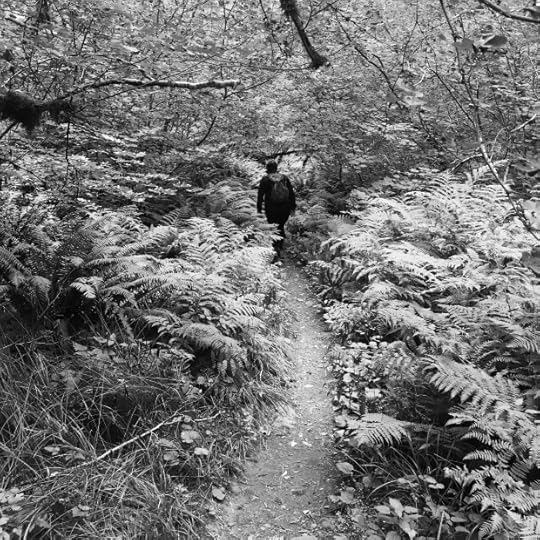
Everything here was shot with my iPhone 6S and processed with VSCO.
Filed under: Travel Tagged: diablo lake, Hiking, mountains, Old Broken Road, pacific north west








June 30, 2016
The Masonic Ironclad
Recently, I have found myself researching the American Civil War for my “riverpunk” project, Coal Belly. I have always been drawn to that era, the division of the United States was dramatic enough, but couple that with the rapid advances in technology and it makes for a strange world. Since Coal Belly is primarily a Weird Western that centers around steamboats and rivers, I was doing research into the riverboats of the Union Navy during the Civil War. That, in turn, led me to pictures of ironclad gunboats, which brought me to the USS Baron DeKalb.
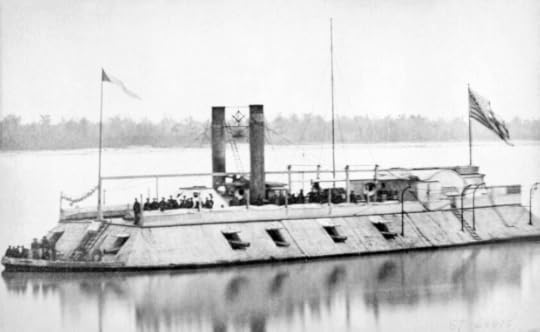 Commissioned as the USS St. Louis, this gunboat was later renamed the USS Baron DeKalb
Commissioned as the USS St. Louis, this gunboat was later renamed the USS Baron DeKalbIt’s an intriguing photo that displays the tank-like aspect of early naval gunboats; because of their half-submerged shell-like appearance you can see how they got the nickname “pook turtles.” Usually, I file away images like this into an “Inspirations” folder, but before I could do that, I noticed something strange in the picture. There is a small, odd object hanging on the spreader bars between the DeKalb’s stacks. Let’s zoom in a bit closer…
 Is that a Masonic symbol hanging between the stacks of the USS Baron DeKalb?
Is that a Masonic symbol hanging between the stacks of the USS Baron DeKalb?Look familiar? That certainly appears to be the Freemason Square and Compasses hanging above the boat. There’s even a ghostly “G” fixed in the middle. Now, there have been are many books (fiction and nonfiction works) and loads of silly conspiracy theories written about Freemasonry’s ties to the founding of America. It is common knowledge that many of our founding fathers were involved in fraternal organizations. So while seeing a Freemason device hanging on the spreader bars of a US naval vessel did not come as a surprise to me; I was intrigued.
The mystery did not stop there. I spent more time poking around and found a few other interesting tidbits. One site noted the odd similarities between this photos of the USS Baron DeKalb and the USS Carondelet. It’s pretty uncanny. In fact, you could argue they are the same picture, just edited ever so slightly. The forward flag has changed between the images, and the Carondelet seems to have an inverted star in place of the Masonic symbol, but a lot of the photo is identical, even the trees in the background.
 USS Carondelet (Left) and the USS Baron DeKalb (Right)
USS Carondelet (Left) and the USS Baron DeKalb (Right)I also found an article reposted from the Scottish Rite Journal that suggested that one of the Dekalb’s captains was most likely a Mason, which could explain the symbol. Additionally, General Baron DeKalb—the riverboat’s namesake—was also a Freemason. So it’s possible the device was hung out of respect for him.
What does this all mean? I don’t know! Nevertheless, it is an entertaining little mystery and one I was happy to stumble upon. Many of my loyal readers know that I am a collector of American folk art that stems from American fraternal organizations and secret societies (particularly the Independent Order of Odd Fellows,) so it is always fun when I find bits and bobs like this during research. It’s a good example of how rich and complex our history can be, and how little details can lead to expansive stories in their own right. Plus, it was just too much fun to keep to myself.
Filed under: Research Tagged: civil war, fraternal organizations, freemasonry, history, ironclad, masonic, uss baron dekalb








June 28, 2016
A Weird Fiction Cover Design Intervention
On Twitter this April, I went on a rant about cover design, specifically targeting indie authors and small press houses within the Lovecraftian and weird fiction genres. Both are genres of which I am proud to be a part, but as of late I’ve found myself disappointed when it comes to the quality of the book cover designs. Fellow author S. Lee Benedict suggested I expand on this topic here, and it’s a good idea…
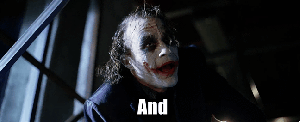
This isn’t the first time I have written about cover design; you can read my previous post, ‘Building A Better Book Cover’ over here. Cover design is something of a passion for me. I’ve been a professional designer for 16 years working on everything from software, branding, advertising, book covers, and a variety of promotional materials. I believe good design is important, and I know it’s important to fans and readers.
So, here’s our situation. I feel like Lovecraftian and weird fiction literature needs a cover design intervention. Honestly, that statement could apply to much, much more than just those two categories; but these days I am closest to those genres, so they get the brunt of my focus. I’m not fond of publically shaming. So, don’t expect me to call out specific examples of bad design. However, with a little searching, you can easily see what I mean.
It’s not that indie authors or small publishers start out with a desire to make awful covers. Sit in on any self-publishing panel at a convention and every author will readily admit it’s worth spending the money on an illustration for your cover. And, many books with terrible covers start with a great illustration. They’re on point for tone and mood, and often a good step in the right direction, but they completely miss the mark when it comes to typography and design. Strange font choices abound, bad effects mar legibility, and bizarre distortions plague the shelves. At best it’s boring, at worst it’s completely illegible. (And it tends to skew towards the latter, unfortunately.) It’s like someone put all their effort into illustration and completely forgot that paying attention to the cover’s typography and design is just as important as having great art. Those three concepts are the pillars of good design. Everything in a book cover plays off of one another; bad typography can forever mar a beautiful illustration.
“…paying attention to the cover’s typography and design is just as important as having great art.”
If indie authors and small presses were more honest with themselves, they’d know when a cover is done vs. done right. It’s not hard to compare; solid examples are everywhere. And it wouldn’t take much to improve; basic typography operates under a set of rules, and a few typography classes at a local college would go a long way to learning the ins and outs. If that’s hard to swing, sit down with a Skillshare class. Jon Contino, the illustrator who did the lettering for my books, offers a Skillshare class on Illustration and Lettering: A Hands-on Approach to Label Design that is excellent. If you’re looking for books on the subject start with The Elements of Typographic Style by Robert Bringhurst. It’s commonly called “the Typographer’s Bible,” and it’s a good (if not dense) place to start. Also, look into Ellen Lupton’s fantastic Thinking with Type: A Critical Guide for Designers, Writers, Editors, & Students; it’s a practical guide on the rules of typography and how to break them effectively and creatively,
 The Elements of Typographic Style by Robert Bringhurst
The Elements of Typographic Style by Robert BringhurstAs I mentioned in my post, ‘Building a Better Book Cover,’ Chip Kidd, one of the greatest book cover designers living today, has said, “A book cover is a distillation. It is a haiku of the story.” I love that quote. He’s not wrong; bad cover design does a disservice to the writing it represents. It detracts when it should enhance, it lies when it should entice.
But there is a silver lining! I know quite a few authors who have taken the time and put in the effort and have made strides in cover design. Word Horde is a great weird fiction press that does wonderful work, and Laird Barron’s novels often have fantastic covers. Recent strides have been made by larger print houses as well; Victor laValle’s Ballad of Black Tom (Tor) and Matt Ruff’s Lovecraft County (Harper) were recent standouts in the genre. So well designed covers in weird fiction are out there. Publishers, designers, and authors should study what those books do right and strive towards emulating their successes.

I believe weird fiction is one of the most exciting and imaginative genres to be writing in today. It pushes at the edges of speculative fiction as a whole and continues to broaden its reach. It’s only reasonable to desire that the covers of the great work being produced should live up to the potential within the pages. We all want these books to continue to attract new readers for decades to come, and a well-designed cover goes a long way to doing just that.
Filed under: Cover Design, Publishing Tagged: Chip Kidd, design, harper, jon contino, lovecraftian, skillshare, tor, weird fiction, word horde








June 27, 2016
During Work
“Inspiration usually comes during work, rather than before it.”
It has been a while since I posted a quote. Figured this tidbit from Madeleine L’Engle was pertinent for most authors. So… yeah, what are you doing reading the internet? As much as I like you coming here and hanging out, you should really get back to writing.
Filed under: Quotes Tagged: creativity, Inspiration, madeleine l'engle, work, Writing











